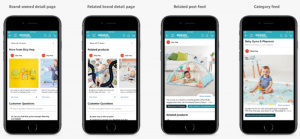Audio advertising uses programmatic advertising technology to automate the selling and insertion of audio ads into content. You can run targeted ads from all the major audio publishers using one system, similar to the way you would with other programmatic buys. The ads are then placed before or during the streaming of a playlist or other audio content, and can reach listeners through various devices, including desktop, mobile, and tablet.
Programmatic audio has lots of benefits and impressive engagement rates. According to Nielsen Media Lab, audio ads have a 24% higher recall rate than traditional display ads. Sounds pretty good, right?
Boost Campaign Performance With Audio Advertising
Introducing audio advertising into your media plan brings lots of benefits that will help boost the performance of your campaigns. One of the ways audio does this is by capturing the listener’s full attention, which leads to the listener feeling intimately connected to the content they are hearing. This intimate audio experience results in a better connection between a listener and a brand, which drives engagement and makes the listener more receptive to advertising.
With audio advertising, you can run highly targeted campaigns, because you can leverage data from audio partners to target specific genres, playlists, moods, and more. Then, use that information to target your audience based on household income, online behaviour, location, and other demographics.
Audio is especially popular among millennials and Gen Z, who are entering, or already in, their prime spending years. If your target audience fits into one of these younger demographics, then programmatic audio advertising can provide an impressive performance boost. The added benefit is that through audio advertising you can form long-lasting relationships that with nurturing, will lead to a higher customer lifetime value (CLV) over time.
But before you can benefit from the potential of audio, your ads need to be created and optimized so that they don’t fall flat. To leverage audio so that it boosts campaign performance, keep these best practices for creating an audio ad in mind.
- Keep your audio ad brief: Audio ads are usually either 15 or 30 seconds long. Keeping them brief helps make them more memorable.
- Craft a concise message: The script for your ad should be simple, with a clear message that clearly explains the value of your product or service.
- Have a strong call-to-action (CTA): Your ad should have a clear CTA that is repeated throughout, along with the name of your brand.
- Use a conversational and friendly tone: Use a voice that is on brand and relatable to your audience. A friendly, conversational tone is key because you’re reaching people when they’re already actively listening.
Adding Audio Ads to Your Multi-Channel Strategy
Audio advertising works well as a standalone campaign, but this medium is also a powerful complement to your other programmatic channels. Because audio is emotionally engaging and screen-free, it captures listeners in an undistracted moment. This makes it the perfect channel for conveying brand personality and building brand awareness. So how can you leverage audio campaigns in conjunction with other channels?
Start by using audio ads to reach your target audience in an engaged and receptive frame of mind. Use this format to capture the curiosity of listeners through your brand personality, and build that initial awareness of your product or service.
Then, it’s time to retarget. Collect audiences that have listened to your audio ad, and retarget them using native or display ads on other devices. With native, you can educate and share information with your audience. For example, write and publish blogs that inform customers about your product highlights and reviews. Or, leverage display ads to engage directly with your target, using interactive ads, or lift performance with a direct call to action such as “shop now” or “learn more.”
Because campaign execution and measurement for programmatic audio works the same way as it does with other programmatic ads, it can be easily added into a holistic plan alongside other channels. Programmatic audio provides powerful listener-level targeting by leveraging data from audio partners to target specific genres, playlists, moods, moments and more.
Unlike terrestrial radio, you can track the impact of your audio campaigns, and optimize in real-time, in the same manner as your other programmatic buys. Metrics include cost per completed listen, audio completion (AC), audio completion rate (ACR), quartile AC and more. By including audio in your multi-channel strategy, you can reach your ideal audience throughout the entire funnel and create a cohesive story across audio, native, video, and display.
Introduce Programmatic Audio Advertising
More and more people are adopting audio as a channel for entertainment. With the growing popularity of platforms like Spotify, and mediums like podcasts, we expect to see this channel continue to grow. In fact, it’s predicted that by 2022, the average time spent listening to digital audio should rise to 1 hour and 37 minutes per day.
Right now is the perfect moment to start introducing audio as a standalone campaign, or as part of your multi-channel strategy. The importance of a multi-channel tactic is to increase your audio reach by capturing users who are on only some of the other channels.
On the StackAdapt platform, we’ve found that when display, video, or CTV is added to an audio campaign, performance is lifted by anywhere from 12% to 81%. By reaching listeners right in their ears, you’ll find you can build brand awareness that will ultimately boost campaign performance.
Digital & Social Articles on Business 2 Community(34)
Report Post




